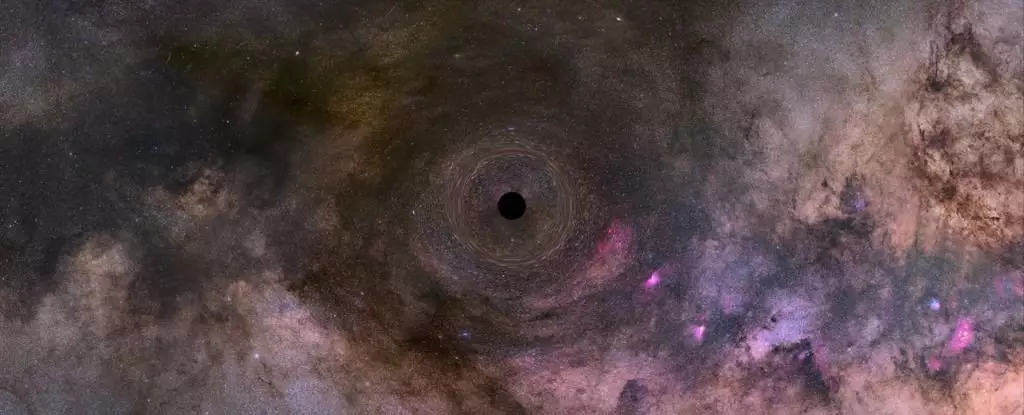In the vast tapestry of the cosmos, where celestial bodies dance and collide, the discovery of a solitary black hole commands our attention and admiration. For the first time, scientists have confirmed the existence of a lonely black hole that traverses the Universe with no companion in sight. This exciting revelation pushes the boundaries of our understanding of black holes, a region of space where gravity is so intense that nothing—not even light—can escape. The concept of a solitary black hole adds a new layer to the intricate narrative of cosmic phenomena.
The Unassuming Giant in Our Galaxy
This particular black hole, approximately 7.15 times the mass of our Sun, lies about 4,958 light-years from Earth. It zips through space at roughly 51 kilometers (32 miles) per second, serving as a testament to the mysterious dynamics of the Universe. Unlike many other known black holes that are often found in pairs or accompanied by stars—whose oscillations expose the presence of their more elusive counterparts—this lone wanderer has remained hidden in plain sight until now. The conventional method of detecting black holes through their interactions with visible celestial bodies didn’t yield results in this case, showcasing a unique aspect of their existence.
Detection Through Gravitational Microlensing
What makes this black hole particularly noteworthy is the method by which it was identified: gravitational microlensing. This fascinating phenomenon occurs when a massive object distorts the light from a background star due to its intense gravitational field. As the black hole passed in front of the distant star, it momentarily altered the star’s light, amplifying it and changing its apparent position in the sky, thereby alerting astronomers to its presence. This method opened a new avenue for black hole detection, proving that even in the absence of visible light, these invisible giants can leave their mark.
A Journey Through Data and Research
The story of this black hole’s discovery is anything but straightforward. Initial data points collected in 2011 from two independent surveys—the Optical Gravitational Lensing Experiment (OGLE) and the Microlensing Observations in Astrophysics (MOA)—marked the beginning of a decade-long quest for confirmation. The Hubble Space Telescope played a critical role, conducting eight observations over six years that meticulously analyzed the star’s light distortion.
However, the path was riddled with complexities. A subsequent study in 2022 initially revised the mass estimate, leading some researchers to speculate if this enigmatic object was, in fact, a neutron star instead. But the pendulum swung back in favor of the black hole hypothesis with new data, reinforcing the credibility of earlier assessments. A collaborative effort among scientists to refine their analysis culminated in the current consensus: the object is indeed a stellar-mass black hole.
The Challenges of Cosmic Observation
One of the profound challenges encountered by the research team was the overwhelming light from a nearby, brighter star. Precise calculations were imperative to isolate the black hole’s effects from the surrounding brightness, requiring intricate correction techniques. This delicate task underscored the difficulties inherent in celestial observation, particularly when seeking to identify elusive entities such as black holes.
Further reinforcing their findings, researchers confirmed that there are no detectable companions larger than 0.2 solar masses situated within a proximity of 2,000 times the distance from the Earth to the Sun. This reinforces the theory that the Universe may host a plethora of solitary black holes, with this one illuminating a pathway to potentially uncovering more of its kind.
A Glimpse into the Cosmic Wilderness
The confirmation of this solitary black hole adds a profound chapter to our understanding of the cosmos and its myriad wonders. While this may be the first recognized single black hole, countless others likely drift through the void, hidden yet lurking in the vast wilderness of space. The persistence of researchers and the advancements in observational technology suggest that humanity is only beginning to scratch the surface in this expansive endeavor.
The cosmos is a playground of mystery and wonder, offering glimpses of phenomena that challenge our perception of reality. These insights invite us to ponder the ways in which our Universe operates and inspire an unquenchable curiosity for what else lies beyond our reach. The revelation of a solitary black hole is a reminder that even the most profound enigmas of the cosmos are waiting to be unraveled.

